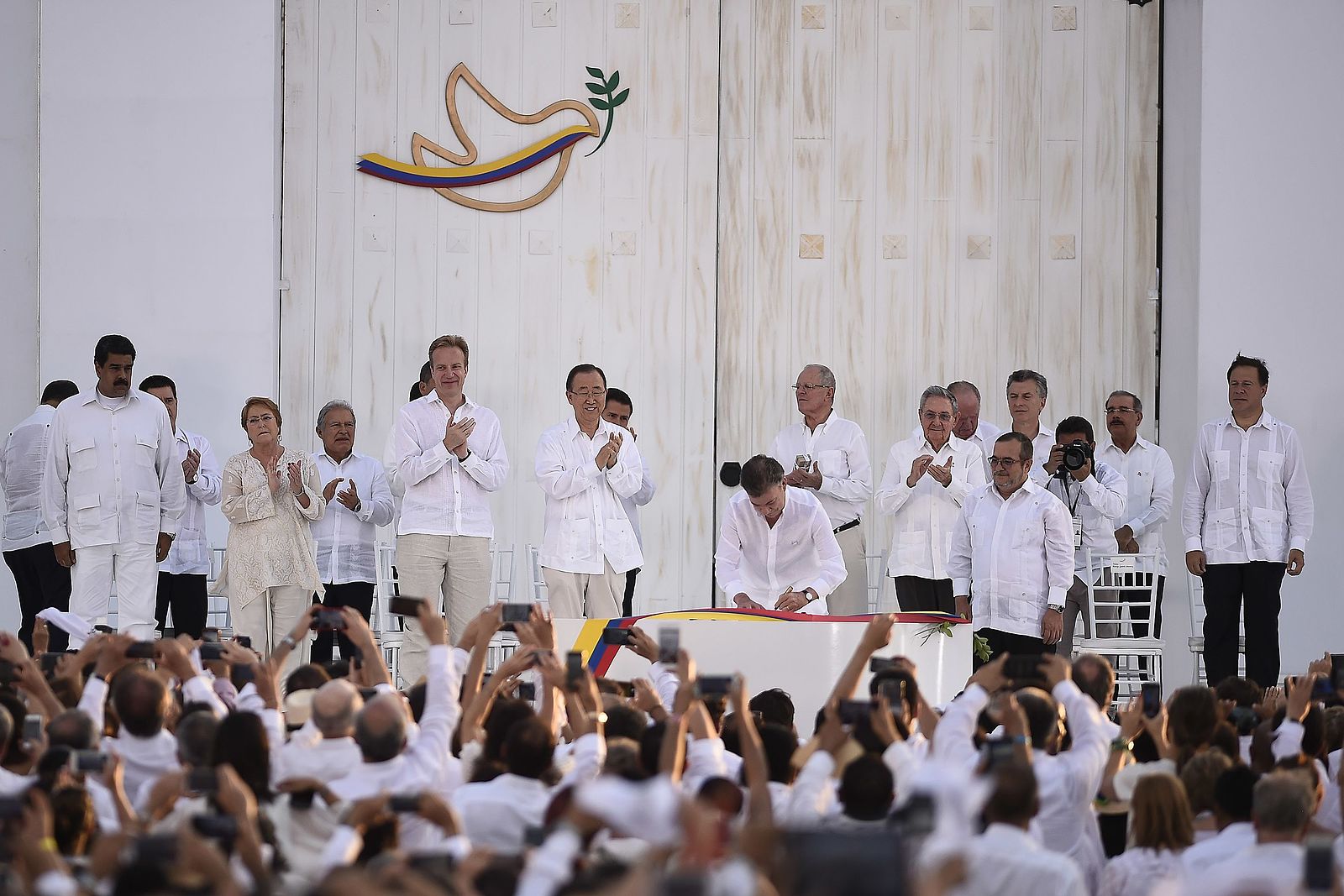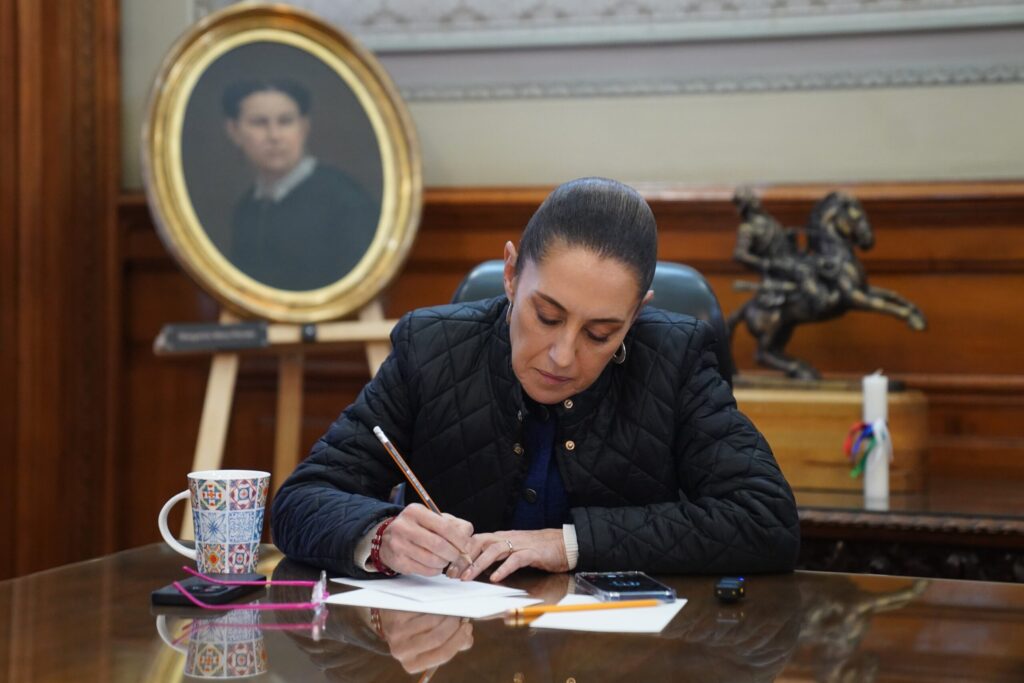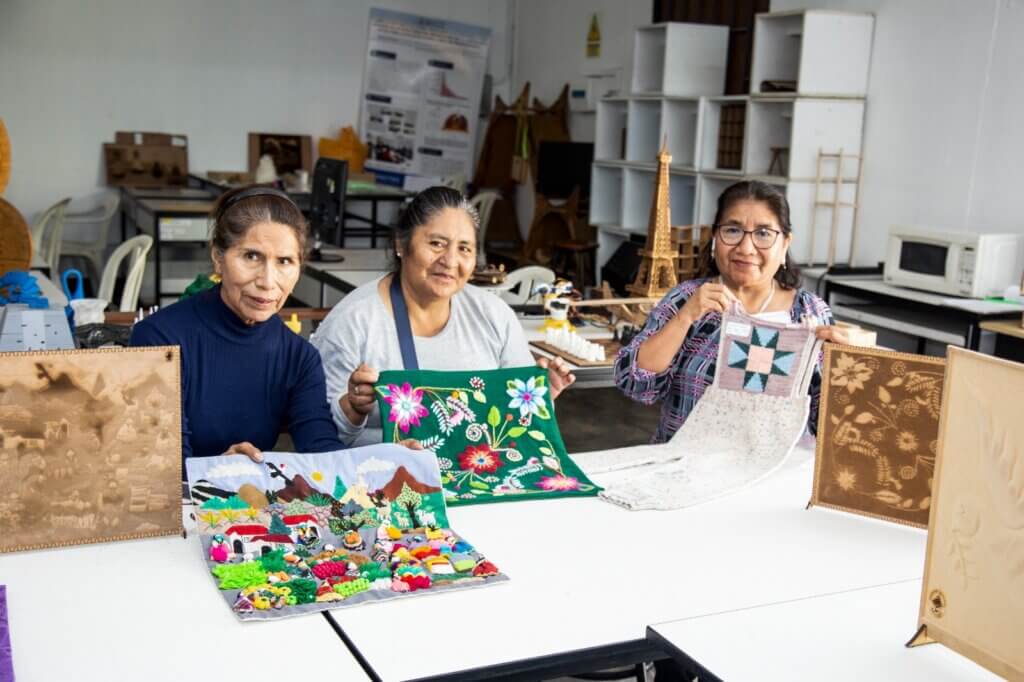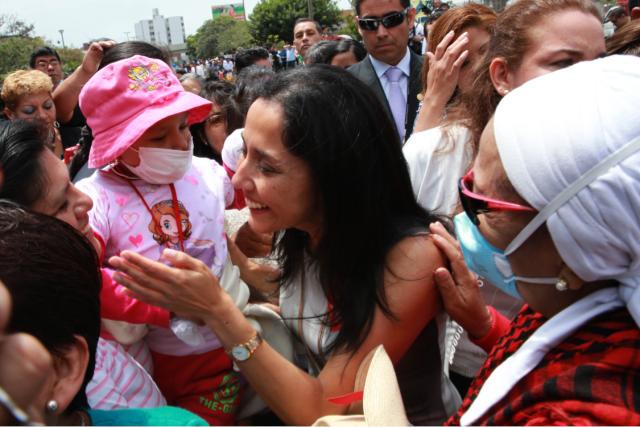On November 24, 2016, in a small theatre in Bogotá, a low-key ceremony marked one of the most monumental moments in Colombian history.
The leader of the guerilla group the FARC (Revolutionary Armed Forces of Colombia) Rodrigo Londoño Echeverry, alias “Timochenko,” and then-President Juan Manuel Santos shook hands over the final version of a peace deal that would see the insurgent army lay down its weapons for good.
But it wasn’t the first signing of the deal. Just months before, a grandiose signing ceremony had been held outside Cartagena’s historic city walls, before presidents and diplomats.
Separating the two ceremonies was a national referendum meant to legitimize the deal, which had been four years in the making and also included extensive political, social and development reforms meant to transform the Colombian countryside. Citizens were asked a single question: Do you support the final peace deal?
To the astonishment of the negotiators and observers, the peace deal was rejected by citizens. That blow reverberated through the peace process, putting it on a more precarious footing to this day. In a matter of months, an amended deal was pushed through Congress, this time without calling a national vote, and then-Senator Iván Duque, whose party opposed the original deal, was elected president less than two years later.
The peace deal achieved the demobilization of well over 10,000 FARC members and dismantled the oldest and largest guerrilla insurgency in the hemisphere. But it has also faced numerous obstacles – many from the current government itself, which made it a priority to modify parts of the deal, causing significant delays.
Implementation of many of the ambitious promises of the peace deal – from land reform to curbing illegal cocaine production, and tackling other armed actors – has fallen short. Violence continues in certain areas, and some of the most prominent FARC guerrillas have abandoned the peace process.
Though implementation has been problematic, bringing a rebel army to the negotiating table and signing a deal which saw them swap weapons for a political voice remains a historic achievement. Here’s what the peace process looks like five years on.
A different kind of war
While the demobilization of the FARC removed the most significant armed actor in Colombia’s conflict, several groups continue to wage war in the countryside, often in regions exited by the FARC.
Many of those groups are remnants of Colombia’s right-wing paramilitaries (which demobilized in the mid-2000s), other organized criminal groups, and left-wing guerrillas. Others still are dissidents of the FARC themselves – groups who defected from the peace process or refused to disarm after the peace deal was signed.
“The power vacuums left by the FARC weren’t filled quickly enough by the government,” Sergio Guzmán, director and co-founder of political risk consultancy Colombia Risk Analysis told Latin America Reports.
Around 30 dissident FARC groups have sprung up, and their presence has now spread to 22 of Colombia’s 32 departments, reports Colombian development and peace think tank Indepaz.
Their territorial control, attacks and fighting with other groups pose a significant security threat. However, they don’t seem likely to threaten the stability of the government, but are rather looking to make money in criminal trades from cocaine to illegal mining.
According to Indepaz president Camilo González Posso, who spoke to Latin America Reports, these groups might reach a fifth of the FARC’s former capacity, with an estimated 3,500 armed members.
Numbers of homicides relating to the armed conflict and several other violence indicators, like kidnappings and armed hostilities, have fallen since the start of peace negotiations, according to separate statistics gathered by Indepaz and Colombia’s Ministry of Defense.
But certain areas are seeing upticks in violence. Victims of massacres have been increasing in recent years, and social leaders are among the most victimized by criminal groups exerting local control. Between 2016 and 2020, 753 social leaders were killed, according to the Colombian Ombudsman’s Office, while separate figures from Indepaz record over 150 killed so far this year. Around 300 former FARC members have also been killed since the peace deal was signed.
González believes that Colombia today is entering a different reality. One with more localized and contained armed fighting, but less intense than the decades-long war with the FARC.
Still, how does Colombia confront the violence that continues to plague it? Negotiating further peace treaties may be a solution limited to just one group – the National Liberation Army (ELN), which, like the FARC, arose as a left-wing insurgency decades ago. However, recent attempts at negotiations have gone nowhere. And while certain FARC dissidents appear to have some political motivations, by and large, the other illegal armed groups in Colombia are driven by territorial control and illicit gains, and there are no government moves to negotiate with them.
Faced with this landscape, the current government’s heavy-handed security strategy may not be the best approach.
“The government continues to believe Colombia needs a war strategy when it comes to security, rather than generating security for peace,” Angela Olaya, co-founder and investigator of the Conflict Responses Foundation (CORE), told Latin America Reports.
Much of the state response has involved pursuing kingpins and armed leaders, but that is not equivalent to creating security on the ground. It’s a strategy closely-tied to anti-drug trafficking efforts, but in reality it doesn’t simply eliminate criminal control, rather, it can make the threat more unpredictable and even dangerous, Olaya explained.
Historically conflict-ridden areas are in need of government action
The peace deal promised the most ambitious transformation of Colombia’s countryside in the nation’s history, through a flagship project named the Development Program with Territorial Focus (PDET).
Over several years, the program aims to improve infrastructure, build roads, provide drinkable water, electricity, healthcare, education and more to 170 municipalities, or a third of Colombia’s land mass. All of this, hand-in-hand with local communities.
But according to analysts, those promises have fallen far short, with long-term consequences.
From the start, the government dragged its feet on the PDET’s implementation. In part because of that critical time lapse, the Colombian state didn’t rapidly establish its presence in many areas where the FARC had often acted as a parallel state, providing security, justice, infrastructure and social services.
With 43% of Colombians living in poverty, offering the population basic services and the possibility of developing legal economies is crucial to steadily weakening the territorial control of armed groups. For that reason, it was hoped that the state would enter areas where it has historically been absent, not only with police and military but with schools, clinics and roads. But even now, rural residents speak of the government showing up to conduct anti-drug operations, rather than build the infrastructure the area desperately needs, while criminal groups continue to wage war and impose their law.
Certain areas have seen progress. The government says thousands of projects have been carried out, and they have seen the PDET integrated into national and local government strategy. Some families are reaping the benefits of the program, from a bettering of rural roads – crucial for getting their crops to market – to setting up poultry farms aided by international agencies. But it appears that long-standing bureaucratic inefficiencies have played a part in paralyzing the deployment of resources on the ground.
Another key part of the peace deal’s rural program, the Integral Rural Reform, is operating at a reduced budget and capacity, and is still missing half the laws it needs to function.
For the people who have been waiting for government reform for five years, that has eroded faith in the government’s capacity for change, potentially far into the future. As key coordinators of the PDET process on the ground, some social leaders have faced so much disillusionment that they have had to step away from the process in order to avoid losing legitimacy and thus jeopardize other communal efforts, according to Olaya.
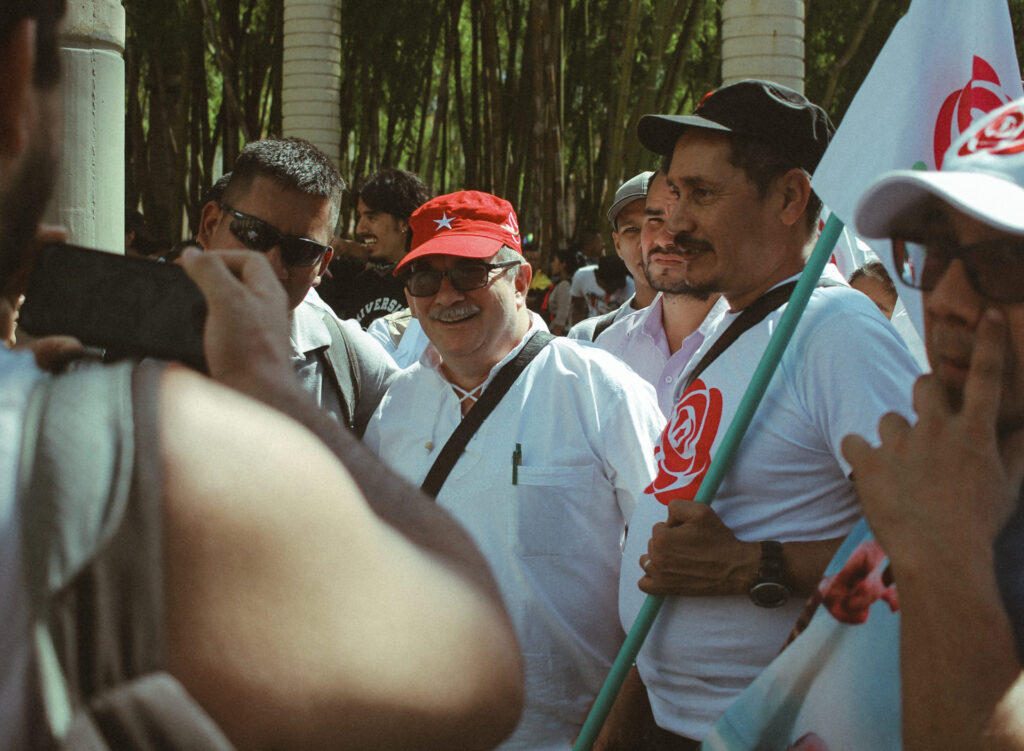
Where are the former guerrillas now?
Reincorporating thousands of ex-combatants into society is no easy task. The multifaceted process includes arranging housing, setting up academic, agricultural and vocational programs, assessing the needs of the former fighters and their families, and strengthening their local communities, Andrés Felipe Stapper, General Director of Colombia’s Agency for Reincorporation and Normalization (ARN), told us.
“The goal for 2021 is to have 11,627 [ex-combatants] on a path to financial sustainability: either working on a productive program, or with access to work,” said Stapper. They’ve achieved around 74% of that target, he added. “Our challenge in the medium and long term is for these productive programs to be sustainable.”
Stapper said that the ARN has also invested US$3.5 million between 2019 and 2021 in programs meant to facilitate ex-FARC members’ reincorporation into communities: these specifically focus on preventing child recruitment, tackling the stigmatization of ex-combatants, and strengthening grassroots political processes.
Then there’s the political goal – a pillar of the peace deal was for the FARC to transition from being an army to being a political actor. The party that was formed maintained its acronym FARC (standing for “Revolutionary Alternative Common Force”) for years before changing its name to “Comunes” (“Commons” in English). Controversially, the deal guaranteed the demobilized guerrillas 10 congressional seats for two terms.
But two of those meant to occupy those seats – including the FARC’s chief peace negotiator Luciano Marín Arango, alias “Iván Márquez” – deserted, declaring the formation of a new dissident armed group in August 2019.
That has not been the only setback for the political group, which has not done well electorally, lacking agility in their transition from military to political organization.
“Without its 10 fixed seats, they would disappear in the coming elections,” Guzmán said.
Did Colombia miss its chance to halt growing cocaine production?
After decades of aggressive anti-drug policy, involving extensive fumigation and eradication, the peace deal gave the government a window of opportunity to work directly with communities growing coca – the plant used to make cocaine – to curb drug production long term. At the core was a program in which coca-growing families voluntarily uprooted their crops in exchange for government support in setting up legal cultivations, like bananas and cocoa.
Many farmers were eager to move away from an illegal industry that put them under the yoke of illegal groups. Also challenging for families are the law enforcement interventions that routinely eradicate their crops – a practice that has a high rate of re-cultivation and has at times caused violent clashes with local communities.
To date, over 99,000 families have signed up for the crop substitution program, called the PNIS. But much of the implementation appears to have stagnated.
According to analysts, the historical iron-fist approach continues to be at the heart of the government’s anti-drug strategy, with a record 130,000 thousand hectares of coca being uprooted by security forces last year.
The numbers don’t show signs of success. Colombia’s cocaine production has been growing since 2014, and it produced more of the drug than ever in 2020: 1,200 metric tons, according to the United Nations Office on Drugs and Crime (UNODC).
“The vision that the peace deal laid out when it comes to illegal drugs has not been implemented by this government,” said Guzmán. “The solution isn’t to do more of the same.”
The government says that while the substitution program is delayed, it is continuing to move forward. Government statistics show that many families have received the promised money for eradicating the drug crops, but some communities have complained that they have not yet received any of the funds.
Only 7% of families on the program are participating in sustainable agricultural projects – but less than a third of those are actually described as “long-term.” This, despite the fact that the majority of coca-growing families who signed up to the PNIS had kept their end of the deal and voluntarily uprooted their coca crops, as the UNODC verified in 2020.
Reconciliation and reparations for victims are advancing
Colombia’s peace process was celebrated for its focus on the right to truth and reparations for victims of the conflict. It included the voices of victims in the negotiations, and set up numerous bodies to listen to witness testimony, investigate war crimes and exercise transitional justice.
It took a while for the special justice system created by the peace deal to investigate and prosecute crimes committed during the conflict to get up and running, with a first historic indictment delivered against former FARC commanders in January 2021. The delay was largely due to controversial objections to the tribunal – named the Special Jurisdiction for Peace (JEP) – by the current government. But it has since been making important progress, both against former insurgents and members of the Colombian Armed Forces.
The JEP “has managed to advance in areas that are very symbolic for Colombian society,” Olaya said.
A Truth Commission has also been tasked with better understanding the armed conflict and its causes with the help of citizens, to foster social healing and avoid history repeating itself.
At a local level, Stapper highlights how reconciliation is happening between communities and ex-FARC combatants, who are actively helping build some of the infrastructure projects laid out in the PDET. “That starts generating bonds of trust and reconciliation, with the accompaniment of institutions, local authorities, and the ARN.”
Over 9 million victims have been registered in Colombia, of which 7.3 million are subject to reparations including psychological rehabilitation, land restitution and returning displacement victims to their homes.
Compensation has generally been quite slow, but the government recently announced almost US$36 billion towards assistance and reparations for victims over the next decade.
What does the future hold?
Despite the setbacks, the peace deal has removed one armed actor with national clout from Colombia’s complex conflict. But a third of the peace deal still needs to be passed into law. While Colombian presidential elections will mean a change in administration next year, the law requires any incoming government to comply with the peace deal.
Partly transitioning away from the reality of a country at war is challenging on every level, with generations having been born into the conflict with the FARC. But some shifts in focus are necessary to heal the country as a whole. According to Olaya, by largely removing the imminent threat of the FARC, people’s attention has moved to Colombia’s other corrosive issues.
“The great specter in Colombia used to be the FARC,” said Olaya. “When the FARC disappeared, we started to see the large flaws of institutions that portray themselves as democratic.”
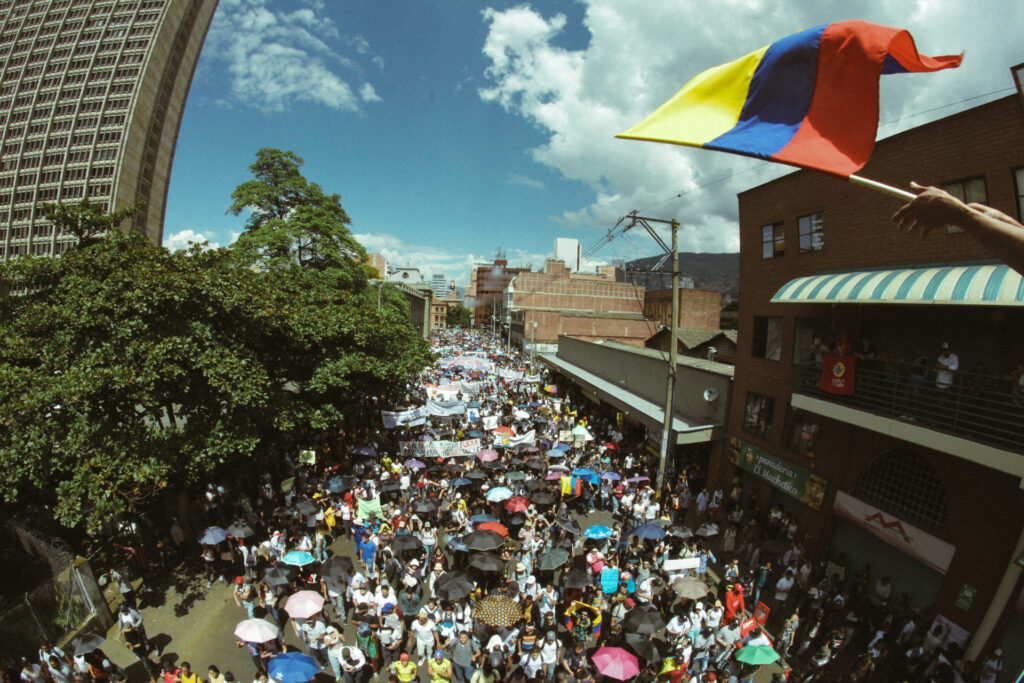
The past couple of years have seen Colombians take to the streets in some of the largest anti-government protests in the country’s recent memory. González said that they were a symptom of how the country has progressed since the peace deal.
“Without the noise of weapons and war, people expressed themselves in the protests … They fought for democracy,” González said.
Colombia has a long and complex road to transformation ahead, institutionally, socially as well as juridically. But the people are determined to see it happen.
“The reforms are far behind, but the spirit of reconciliation is moving forward, ” said González.


